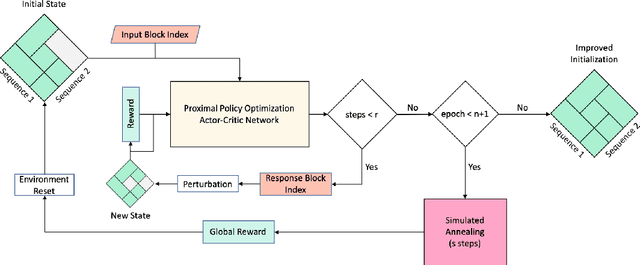Devika Shanbhag
Hierarchical Automatic Power Plane Generation with Genetic Optimization and Multilayer Perceptron
Nov 02, 2022Abstract:We present an automatic multilayer power plane generation method to accelerate the design of printed circuit boards (PCB). In PCB design, while automatic solvers have been developed to predict important indicators such as the IR-drop, power integrity, and signal integrity, the generation of the power plane itself still largely relies on laborious manual methods. Our automatic power plane generation approach is based on genetic optimization combined with a multilayer perceptron and is able to automatically generate power planes across a diverse set of problems with varying levels of difficulty. Our method GOMLP consists of an outer loop genetic optimizer (GO) and an inner loop multi-layer perceptron (MLP) that generate power planes automatically. The critical elements of our approach include contour detection, feature expansion, and a distance measure to enable island-minimizing complex power plane generation. We compare our approach to a baseline solution based on A*. The A* method consisting of a sequential island generation and merging process which can produce less than ideal solutions. Our experimental results show that on single layer power plane problems, our method outperforms A* in 71% of the problems with varying levels of board layout difficulty. We further describe H-GOMLP, which extends GOMLP to multilayer power plane problems using hierarchical clustering and net similarities based on the Hausdorff distance.
Placement in Integrated Circuits using Cyclic Reinforcement Learning and Simulated Annealing
Nov 15, 2020



Abstract:Physical design and production of Integrated Circuits (IC) is becoming increasingly more challenging as the sophistication in IC technology is steadily increasing. Placement has been one of the most critical steps in IC physical design. Through decades of research, partition-based, analytical-based and annealing-based placers have been enriching the placement solution toolbox. However, open challenges including long run time and lack of ability to generalize continue to restrict wider applications of existing placement tools. We devise a learning-based placement tool based on cyclic application of Reinforcement Learning (RL) and Simulated Annealing (SA) by leveraging the advancement of RL. Results show that the RL module is able to provide a better initialization for SA and thus leads to a better final placement design. Compared to other recent learning-based placers, our method is majorly different with its combination of RL and SA. It leverages the RL model's ability to quickly get a good rough solution after training and the heuristic's ability to realize greedy improvements in the solution.
 Add to Chrome
Add to Chrome Add to Firefox
Add to Firefox Add to Edge
Add to Edge